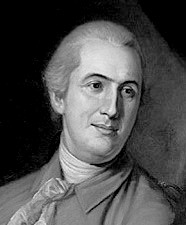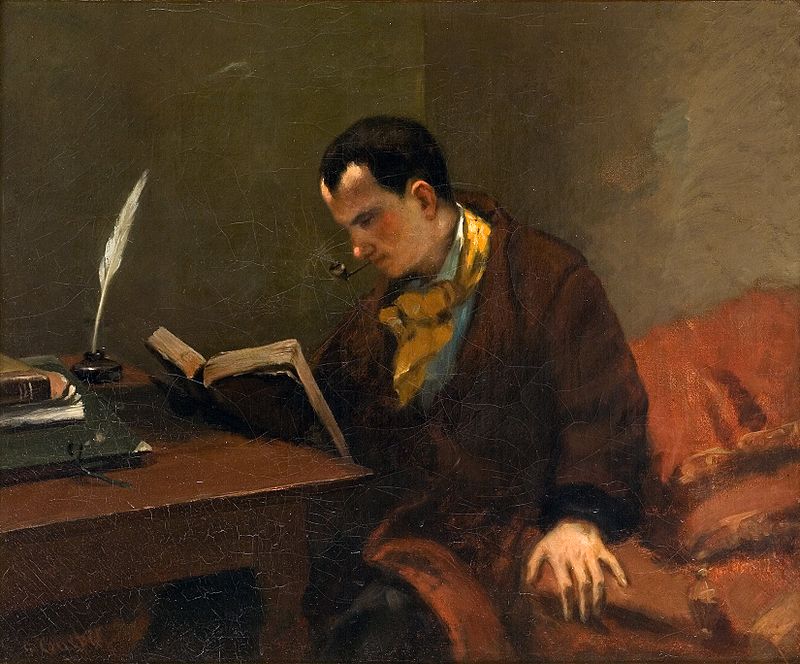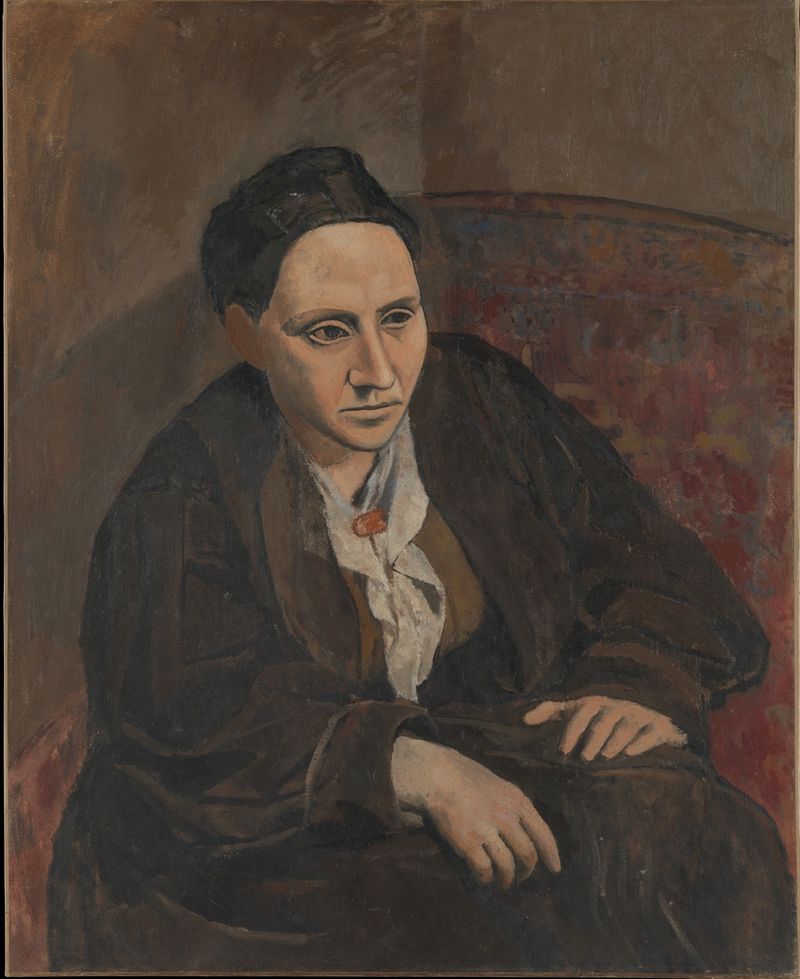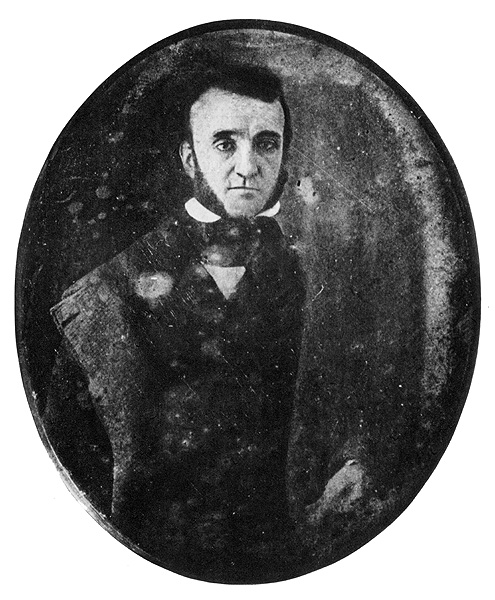One of the dangers of the library biz is that you are constantly surrounded by attractive nuisances, by which I mean those flat things with lots of pages between their covers. In a word, books. You stroll on your merry way, glance at a shelf, and uh oh, there's something that will fill your lunch hours for weeks to come.
For instance, I recently noticed a biography of John Randolph, or as he preferred to style himself, Randolph of Roanoke. I had heard of him before as a master of the instant insult, a sort of Winston Churchill for the Federalist period. For example, here are his comments on a couple of politicians he didn't love:
 |
| John Randolph |
"Like rotten mackerel by moonlight, he shines and stinks."
"Never were abilities so much below mediocrity so well rewarded; no, not when Caligula's horse was made consul."
I picked up the book looking for more such wit. Instead I stumbled into one of the strangest true stories I have ever encountered. If you wrote this up as a gothic novel your editor would say, sheesh, tone it down. No one's gonna believe it.
Once I got interested I went looking for a book specifically on the topic and found Cynthia A. Kierner's
Scandal at Bizarre, which is the main source of what you will read below.
This is a bizarre story in more ways than one, because most of the characters lived in a house called Bizarre.
Start with this: The Randolphs were one of the oldest families in Virginia, and like many of the aristocrats after the Revolutionary War, were sunk deep in debt. John's big brother Richard, head of the clan, was married to his second cousin, Judith Randolph. (That was her maiden name. The plantations of Virginia were stinky with Randolphs.)
Living at Bizarre with the newlyweds were John and also Judith's sister Nancy.
On October 1, 1792, Richard, Judith, and Nancy spent the night at the home of some friends, Mary and Randolph (!) Harrison. During the night Nancy began screaming in pain. Mary went to check on her and found-- Well, what you expect? That Nancy's sister Judith was looking after her? No, it was her brother-in-law Richard.
In the morning the Harrisons found blood on the stairs. Later that day the family slaves reported finding a dead newborn on the plantation. The Harrisons, oddly enough, did not check up on that story. (Perhaps they had a very good - or very bad - reason for that, as we shall discover.)
 |
| Patrick Henry |
It seems clear that unmarried Nancy had either had a miscarriage, or an abortion (a few weeks earlier Thomas Jefferson's daughter, Martha, married to yet another Randolph, had provided Nancy with a medicinal herb which supposedly could be used as an abortifacient), or else she gave birth. The vital question was: had there been a live birth and if so, how did the child die? Was this infanticide?
The scandal rocked Virginia and most people assumed that Richard was the father, which made it a case of incest. (Not because they were second cousins but because they were brother and sister-in-law). Richard finally demanded to be put on trial in an effort to clear his name.
Nancy, by the way, was willing to admit to a stillbirth and to claim that Richard and John's
other brother Theo, who had died months before, was the father. But that didn't really help Richard: as head of the family he lost honor if he had permitted such things to happen under his roof. He wanted a court to exonerate them both.
 |
| John Marshall |
And the trial is where it gets even more interesting. (Richard's lawyers were the aging but legendary orator Patrick Henry and future Chief Justice John Marshall.) There were no witnesses who could testify that they had seen a dead baby. Remember how the hosts chose not to go look? The slaves had seen it, of course, but
slaves could not testify. (Interesting fact: later Richard turned against slavery, and freed his own slaves.)
A Not Guilty plea was delivered but the Randolphs remained under a cloud of disgrace. Judith never forgave her sister and after Richard died years later she relegated Nancy to duties that were normally done by slaves.
Not surprisingly Nancy left her beloved Virginia and went north, where her fortunes changed dramatically when she met Governeur Morris. Morris was quite a character in his own right. He was a successful businessman and diplomat and one of the major writers of the U.S. Constitution.
Morris apparently told Nancy he was looking for a housekeeper for his home in what is now the Bronx. It seems apparent he had other plans for her as well.
 |
| Governeur Morris |
Nancy arrived at Morrisania in April 1809 and apparently fit right in. On Christmas day, to the astonishment of Governeur's assembled relatives, the lifelong bachelor took her as a bride.
The relatives were not thrilled. A kind interpretation would be that they were afraid this young poor woman of dubious reputation was taking advantage of their beloved kinsman who was, after all, a doddering old codger of fifty-seven. A less generous explanation was that they had been expecting to inherit his considerable wealth and saw Nancy as an obstacle. Which indeed she was, especially after giving birth to Governeur, Jr. three years later.
One niece, acting as what we would now call a concern troll wrote to her dear uncle worrying about what the world would think of his marriage. He replied: "I
f the world were to live with my wife, I
should certainly have consulted its taste; but as that happens not to be
the case, I thought I might, without offending others, endeavor to suit
myself." What's the early nineteenth century term for "drop the mic?"
Some of Nancy's in-laws plotted against her (led, inevitably, by a crooked lawyer) and found a champion in no less than John Randolph. Remember him? It was his biography that got me into this whole mess.
Randolph of Roanoke wrote an 8-page letter supposedly addressed to Nancy but actually sent to her husband. He warmed up by accusing her of infanticide, then suggested that she had poisoned Richard to death. He claimed that she had slept around in Virginia, and even had an affair with a slave. (This was apparently based on the fact that she had addressed a written work order to one with the words "Dear Billy Ellis." Surely showing good manners to a slave revealed unbridled lust!) And when she went north, he said, she had been a prostitute. Of course he was hinting that the Morris's son was illegitimate, a charge which if believed would boost the futures of the spiteful shirt-tail relatives.
Morris apparently held on to the letter for several months before showing it to Nancy. Now, I must admit I have become a fan of this guy. For one thing he was the child of slaveowners but adamantly against that peculiar institution. Secondly, he was a notorious ladies' man in his youth, but clearly wasn't the type who held women to a different standard than himself. So, my theory has to be a favorable one: I think he kept the hate note hidden until he suspected (correctly) that Randolph was spreading copies around.
Nancy did not suffer in silence. Her cousin, the insult master, was about to have his timepiece sanitized, by which I mean she cleaned his clock. Two can play at the nasty letters game.
 |
| The only known portrait of Nancy Randolph Morris |
She wrote her own 7,000 word letter and circulated at least twenty copies. Since Randolph had called her alleged slave lover "Othello" Nancy replied that by whispering lies in her husband's ear Randolph was playing "honest Iago." Switching plays, she said his letter was "a tale told by an idiot, full of sound and fury, signifying nothing."
Then Nancy pointed out that he had provided no evidence for his charges and then demonstrated that his own actions contradicted his assertions: If she was so horrible why would John allow his sickly nephew to be under her care for months at a time? She also said that when she was young he had pursued her romantically but had been rebuffed because of his "mean selfishness" and "wretched appearance." She called his recent behavior "unmanly," which had to sting since he was widely rumored to be impotent. She even mocked his pompous preferred title, putting "John Randolph of Roanoke" in scare quotes whenever she used it.
These letters appeared while Randolph was running for Congress and were no help to his political career. At that point he retired from the Nancy-libeling business.
Governeur Morris died not much later. In his will he ignored his ambitious relatives and left most of his estate to his young son, whose paternity he clearly never doubted. He left Nancy an allowance to live on with the caveat that if she remarried the allowance would be --
Increased. You didn't expect
that, did you? Morris explained that if she remarried she might have more expenses so he wanted to provide for that possibility. I think he was hoping she would find a new husband. As I said, I
like this guy.
But Nancy never remarried. She raised their son and arranged for the publication of her late husband's letters, which demonstrated the domestic bliss they had found together. As it turned out the strongest testimony about Nancy's fidelity was her son, for the boy looked more like his father every year.
Young Governeur became a successful businessman and when his mother died he built a church in her honor. And so ends the bizarre story of the residents of Bizarre, back in the days when politics was clean and southerners were chivalrous. Or something.

















































